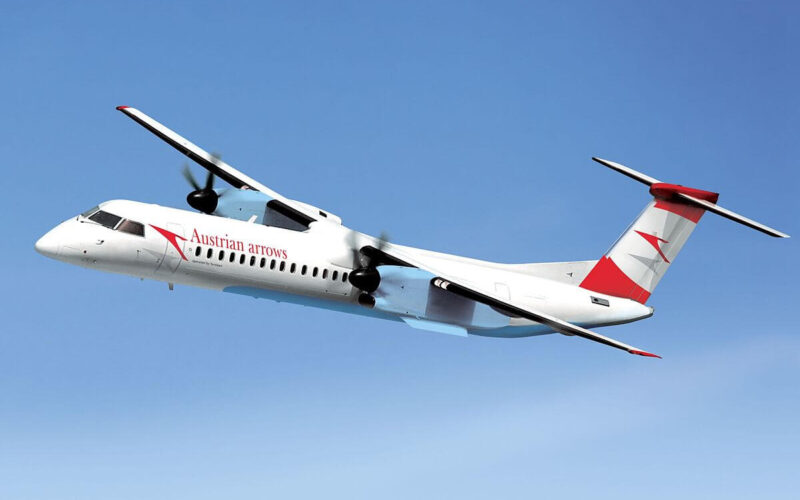Bombardier Completes The Sale of Q400 – de Havilland Is Officially Back
Bombardier has announced great news for everyone that is keen for aviation’s history – the Canadian company has completed the sale of their Dash – 8 Q400 program to Longview Aircraft Company of Canada Ltd., which will be known as De Havilland Aircraft Of Canada Ltd. That company is an affiliate of Longview Aviation Capital, which owned Viking Air Limited.
It might sound confusing, but let‘s clear everything up.
At the top of the whole deal are two parties – Bombardier, which is selling the Q400 program, including the De Havilland trademark.
The other party is Longview Aviation Capital. The company owns the affiliate Longview Aircraft Company of Canada, which will purchase the Q400 program. But Longview Aviation Capital (the parent company) also owns the subsidiary called Viking Air, which owns the licenses to every DHC series aircraft, from the DHC-1 to the DHC-7.
As a result of the sale, Viking Air will now also own the DHC-8 program and as of today, all of the aircraft formerly manufactured by De Havilland Canada (or DHC for short) will be yet again built under the DHC name.
The last time every De Havilland Canada aircraft were manufactured under the same banner was before 1986 when the Canadian government sold DHC to Boeing.
But why is Bombardier selling off the Q400 program with over 1250 deliveries as of April of 2019?
Bombardier’s struggles
The Canadian manufacturer is currently undergoing a restructuring process because Bombardier has been losing money for a long time. For the first time in 4 years, Bombardier posted a profit in 2018.
Bombardier’s commercial airline division was struggling. As a result, Bombardier sold of the C Series aircraft program in 2018 to Airbus, which renamed the program to the A220. As of today, Airbus has 536 pending orders for the A220.

Bombardier is slowly shifting their business in the aviation industry to focus on their CRJ program and Bombardier’s business jets, namely the Challenger, Global and Learjet brands. The Canadian manufacturer’s business jets actually helped stay Bombardier afloat, as the commercial aircraft division was losing money.
As a part of the restructuring, Bombardier will also unite all of their aircraft brands under the name Bombardier Aviation. In addition, as we have reported in the article highlighting the most important aviation news in May, Bombardier is selling their factories in Northern Ireland and Morocco.
So, because of this, the Canadian company is also shipping off the Q400 brand. As a result, Bombardier’s commercial aircraft deliveries in Q1 of 2019 have also dropped compared to the same period in 2018.
Nevertheless, this is great news for both Bombardier and us, aviation enthusiasts. Bombardier’s accounts seem to be in the green again after successful business ventures.
Most importantly, the De Havilland brand trademark is reborn.
De Havilland‘s importance to aviation
While the brand is most famous for its attempt at a commercial jet aircraft, the Comet, the British company is also known for its Fox and Tiger Moth‘s that changed aviation in the early 20th century.
De Havilland established De Havilland Canada in 1928 to build the DH.82 Tiger Moth to train Canadian Air Force personnel. The Canadian subsidiary also built the Mosquito bomber, as during the Battle of Britain the British government was afraid of losing all its manufacturing power if the Germans were to invade.
After the war, however, the de Havilland in Britain and de Havilland in Canada went their separate ways. The main de Havilland company focused on experimental jet-engine designs, while the Canadian subsidiary shifted its focus to building aircraft specifically suited for the Canadian environment and passenger numbers.
Thus, many turbo-prop powered aircraft followed, namely the DHC-2 Beaver, which Harbour Air is converting to an electric aircraft soon, the DHC-3 Otter, the DHC-6 Twin Otter, DHC-7 and of course, the DHC-8 Dash 8 Q400.

Viking Air to this day produces spare parts and services the DHC-2 and the DHC-3, as they are still used in Canada. The company resumed the production of the DHC-6 in 2008 after it had first seized in 1988.
De Havilland Canada produced such aircraft that are still operated to this day, even 60 or 50 years later after they were first manufactured.
Their robustness, reliability and flexibility to land anywhere – from water to rough gravel landing strips make them irreplaceable in more remote regions in Africa, North America and the Pacific islands.
Sure, the reborn De Havilland brand won‘t challenge Airbus or Boeing, but the company definitely carries a very significant name in the history of our beloved industry.
We‘re glad you‘re back, De Havilland!

